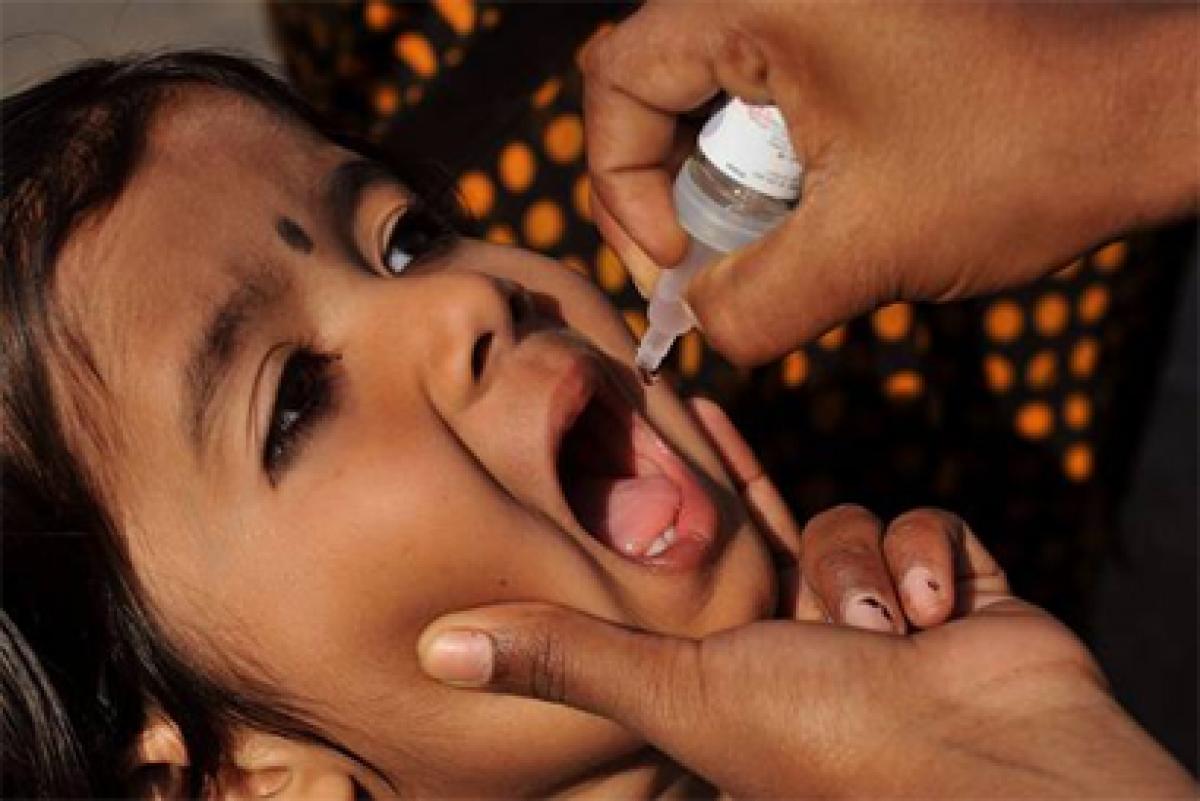Live
- GMR Airports Unveils AI-Powered Digital Twin Platform to Transform Airport Operations
- India poised to become leading maritime player: PM Modi
- Top Causes of Kidney Stones and How to Recognize Silent Symptoms
- India’s renewable energy capacity logs 14.2 pc growth at 213.7 GW
- Winter Session of Odisha Assembly adjourned sine die
- Biden calls Trump's tariff approach 'major mistake'
- After Drama Over Eknath Shinde’s Chief Minister Race, Maharashtra Cabinet Formation Faces New Tensions
- Egyptian FM, Blinken discuss recent developments in Syria
- Iran's supreme leader says Syria's developments result of US-Israeli 'plot'
- Elon Musk to Purchase $100 Million Luxury Mansion Next to Donald Trump's Mar-a-Lago, Report Reveals
Just In

It is well known that some diseases are endemic in specific regions due to unfaourable physical and social environments. Some region-specific diseases in case of Andhra Pradesh and Telangana are also still coping and troubling them for years. The regions of both States where certain diseases are either endemic or more pronounced than the rest of the country.
It is well known that some diseases are endemic in specific regions due to unfaourable physical and social environments. Some region-specific diseases in case of Andhra Pradesh and Telangana are also still coping and troubling them for years. The regions of both States where certain diseases are either endemic or more pronounced than the rest of the country.
Malaria followed by TB affects the largest number of people in both the States, while malaria is found across both the States; endemic malaria zones are associated with the hilly, forested tracts covering Srikakulam, Vizianagarm, Vishakapatnam in Andhra Pradesh and Adilabad in Telangana. These five districts of both States are also endemic to Plasmodium falciparum (PF), malaria (brain fever) with high death rate. As these districts including the northern parts of Godavari districts are characterized by high Adivaasi populations and prone to more endemic deceases due to poor health facilities in the Agency areas.
For the State of Telangana, the challenge is of tackling fluorosis, predominantly present in Nalgonda district and Andhra, especially, its two regions of Srikakulam and East Godavari, dealing with filariasis. Beisides, both the states also have to constantly focus on dealing with growing challenges from ailments like dengue, tuberculosis, malaria and seasonal flu other than the usual non-communicable diseases like hypertension, diabetes and cancer.
The major challenge of fluorosis for over 60 years is persisting in Nalgonda of Telangana. This semi-arid region is known for its groundwater having higher than normal fluoride concentration. Intake of excess fluoride, most commonly through drinking water, can cause Fluorosis. It is a condition that affects teeth and bones.
Long term intake can lead to potentially severe skeletal problems, while moderate amounts lead to dental effects. To mitigate the problem of fluorosis in Nalgond, Telangana government has taken an ambitious “Mission Bhageertha” to providing piped water from the Krishna river Experts have suggested the need to explore groundwater treatment technologies.
The Telangana government, over the next 18 months or so, intends to deal with this by bringing surface water from the Krishna and Godavari rivers. Eradicating fluorosis from Telangana through this drinking water project is the priority of the government and by end of 2017 in Nalgonda .
In Andhra, it is about eradicating filariasis or lymphatic filariasis, as some would prefer to call it. It is a problem that has tended to be more prevalent in the Srikakulam and East Godavari regions of the state and has been known for several decades now. It is an infection that occurs when filarial parasites are transmitted to human from mosquito bites. These are usually in areas that are waterlogged and where there is stagnation of water.
Elephantiasis when the parasites are transmitted to humans that resulted in swelling (lymphoedema) of legs. It is a painful, disfiguring swelling of the legs in the late stages of the disease. These regions of Andhra apart from other locations, have been coping with this disease for years now in India, which is among the 10 countries globally, which in all, according to the World Health Organisation (WHO), together make up for bulk of people affected by this ailment.
Elimination of lymphatic filariasis is possible by stopping the spread of the infection. Large-scale treatment involves a single dose of two medicines given annually to an entire at-risk population and includes medicines like albendazole (400 mg) together with ivermectin (150-200 mcg/kg) or with diethylcarbamazine citrate (6 mg/kg).
This treatment is generally referred to as preventive chemotherapy. Incidentally, like it was with polio in 2014, India has set a goal to eradicate filariasis by 2015. However the problem still continues in Andhra.
Other than these region-specific issues, there are other health indicators that need early attention. As per statistics "a number of health indicators in Telangana need to be addressed for improvement.
In six out of ten districts of the state, the infant mortality rate (IMR) is found to be much higher than the national average of 40. The maternal mortality rate (MMR) at 152 is very high in the district of Adilabad as compared with the national average of 167. The percentage of home deliveries at 11.5 percent as per District Level Household Survey (2012-13) - conducted by the International Institute for Population Sciences from Mumbai - is found to be very high in the district of Adilabad.
G.Rajendra Kumar

© 2024 Hyderabad Media House Limited/The Hans India. All rights reserved. Powered by hocalwire.com







